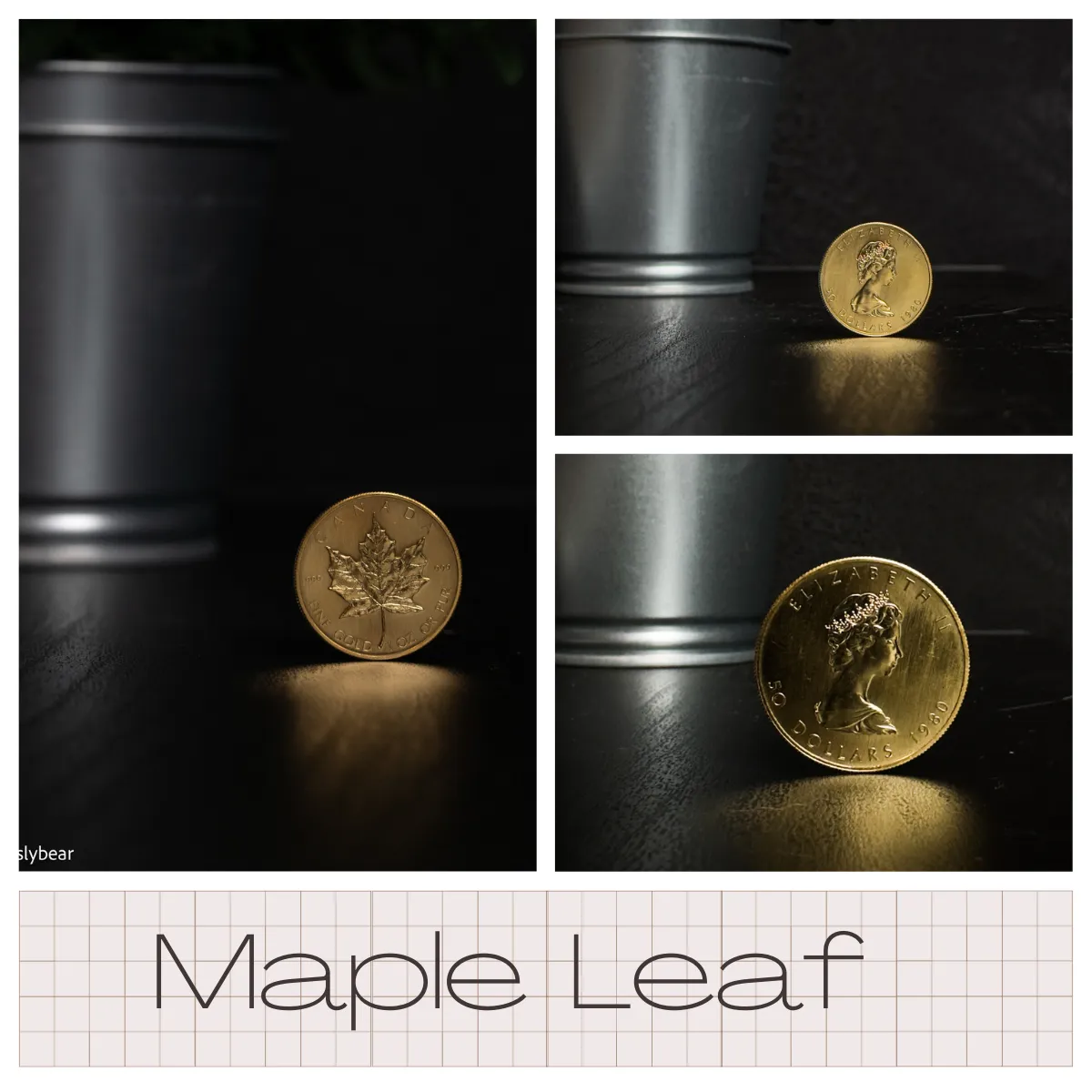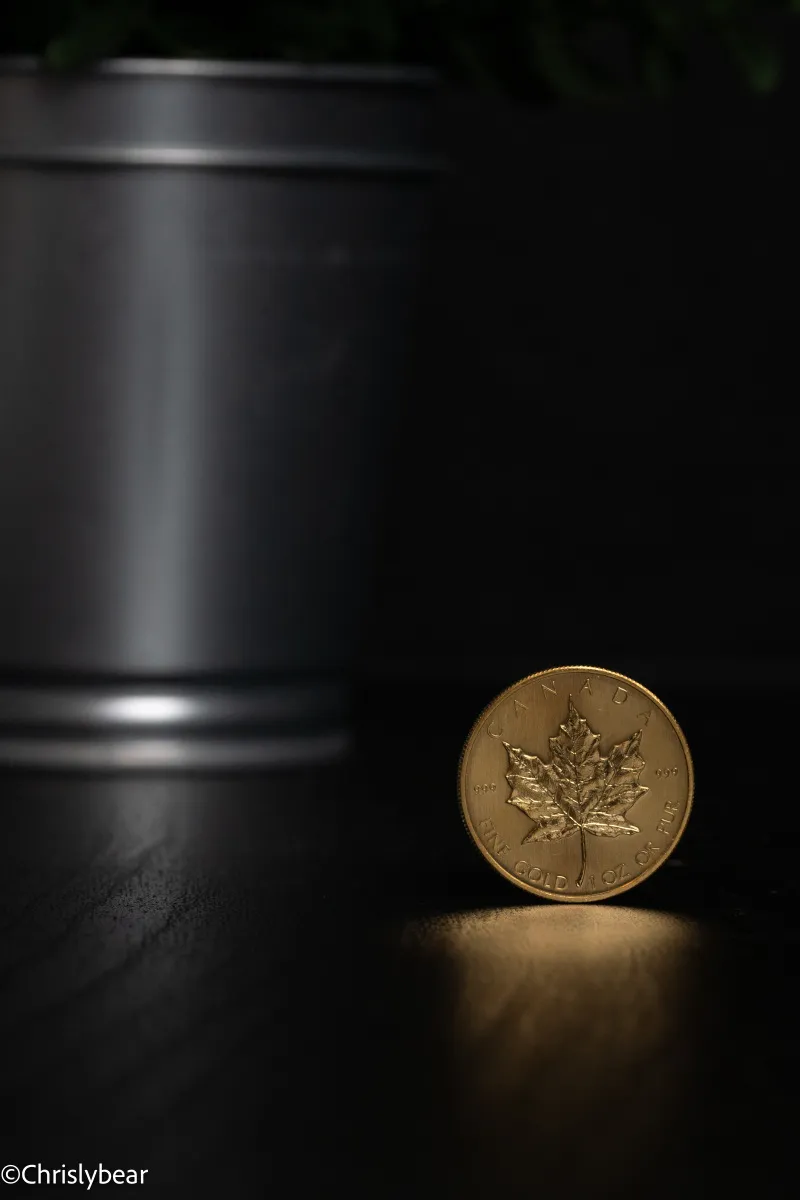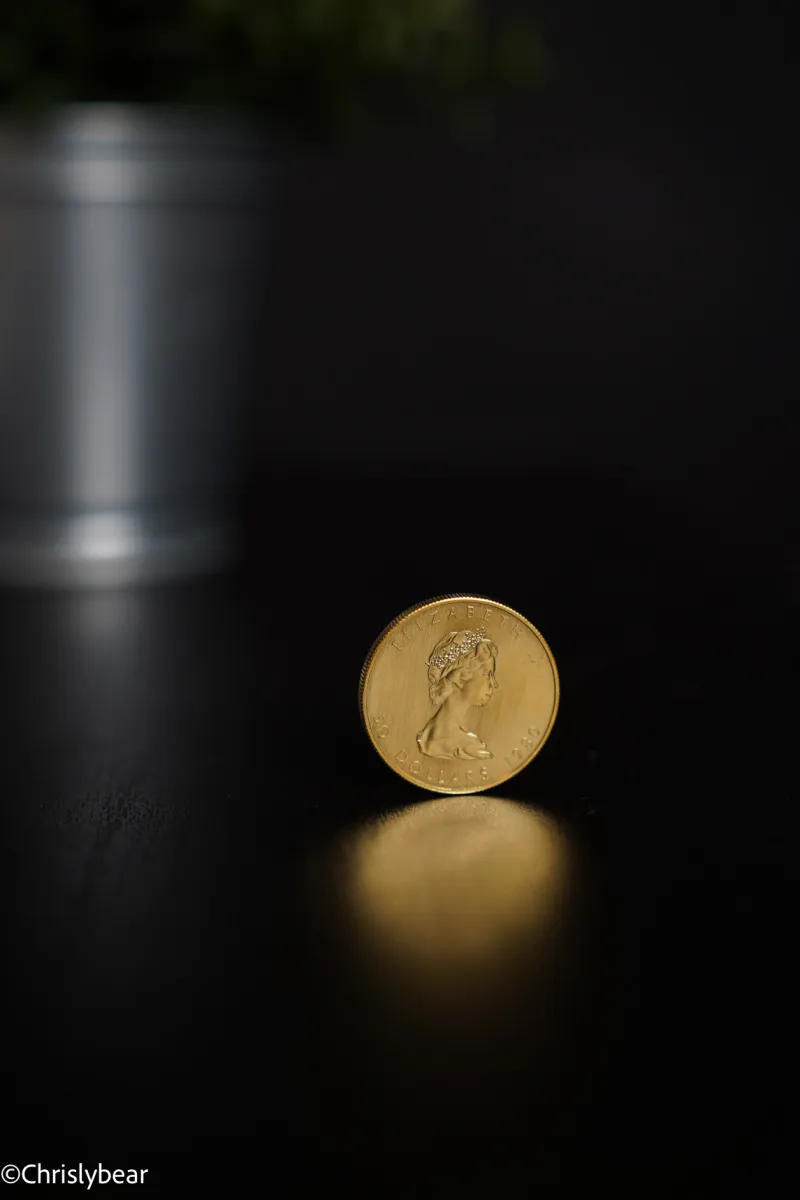



Thickness: 2,80mm
Diameter: 30,00mm
Country of origin: Canada
Manufacturer: The Royal Canadian Mint
Year of issue: 1980
Mintage: 1,215,000 pieces
The Maple Leaf was introduced in 1979 - that means my coin was minted in the second year and also in the year with the highest mintage of the 1oz (1.215.000 pieces). As a small hint, until 1982 only 1 oz were minted.
While "researching" on the internet, Google suggested to me: "Why is the Maple Leaf more expensive than the Krugerrand? - puzzled by this question, I first read up on what it was all about. In my opinion, the Krugerrand was always more expensive than the Maple Leaf. When comparing different portals, it also turned out that the Krugerrand is on average €3 more expensive than the Maple Leaf. Weird suggestion of Google...
But why?
1oz means 1 ounce of gold in the respective coin. The Maple Leaf has a fine gold content of 999, whereas the Krugerrand has a fine gold content of 916. A small amount of copper is also added to this, which incidentally gives it a slightly redder appearance than the Maple Leaf. So this one would be more expensive from the components alone - although the proportion of copper used is in the cent range. So the whole thing is negligible. So where does the price difference come from? Popularity? Name? Origin? If anyone knows exactly, please leave a comment :D



Dicke: 2,80mm
Durchmesser: 30,00mm
Herkunftsland: Kanada
Hersteller: The Royal Canadian Mint
Prägejahr: 1980
Auflage: 1.215.000 Stück
Eingeführt wurde der Maple Leaf im Jahr 1979 - das heisst meine Münze ist im zweiten Prägejahr entstanden und darüberhinaus auch im prägestärksten Jahr für die 1oz (1.215.000 Stück). Als kleiner Hinweis, bis 1982 wurden nur 1 oz geprägt.
Beim "nachforschen" im Internet schlug mir Google vor: "Wieso ist der Maple Leaf teurer als der Krügerrand?" - über diese Frage verwundert, erstmal nachgelesen was es damit auf sich hat. Nach meinem empfinden nach war der Krügerrand immer teurer als das Maple Leaf. Beim vergleichen verschiedener Portale stellte sich auch heraus, der Krügerrand ist im Durchschnitt 3€ Euro teurer, als das Maple Leaf. Komischer Vorschlag von Google...
Aber wieso?
1oz bedeutet da auch 1 Unze Gold in der jeweiligen Münze enthalten ist. Der Maple Leaf hat einen Feingoldgehalt von 999, wobei der Krügerrand einen Feingoldgehalt von 916 hat. Diesem wird zudem ein kleiner Anteil Kupfer hinzugegeben, dadurch wirkt dieser übrigens etwas rötlicher, als das Maple Leaf. Also würde dieser alleine von den Bestandteilen teurer sein - obwohl der Anteil des verwendeten Kupfers im Centbereich liegt. Das ganze ist also zu vernachlässigen. Woher kommt also der Preisunterschied? Beliebtheit? Name? Herkunft? Falls es einer genau weiß gerne einen Kommentar hinterlassen :D

Falls dir meine Beiträge gefallen, vielleicht möchtest du mir bei HIVE.VOTE folgen. Darüber würde ich mich riesig freuen 😊
If you like my posts, maybe you would like to follow me at HIVE.VOTE. That would make me very happy 😊
